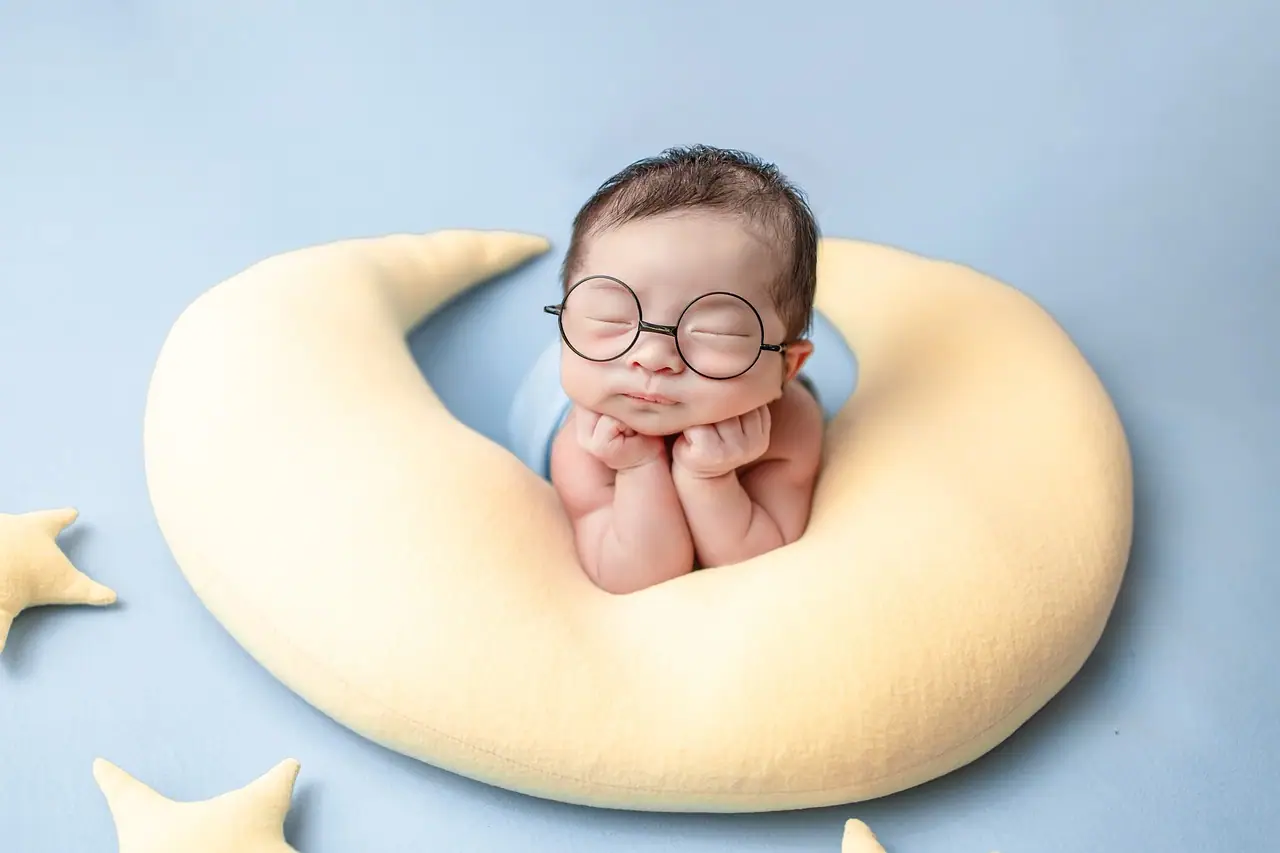No two children grow at exactly the same rate. For this reason, it is impossible to give a fixed timetable of development for an infant’s first year. General trends do exist, however, and the following discussion is an attempt to chart a child’s milestones in growth and behaviour on a month-to-month basis. Remember, each child is different and may perform a particular activity sooner or later than others.
First Month: A newborn baby can see shadows, outlines, can establish eye contact and responds to sound. He sleeps most of the day.
When a newborn baby is lifted, the headrops, always support it. This implies that is learning to sit.
A newborn baby learns to crawl by lying with pelvis higher than arms and legs.
He learns to use his hands. This point is noted when a newborn baby’s palm is touched and the hand closes.
Second month: Baby turns in the direction of sound and cries differently to signal hunger, discomfort or excitement. He may begin to grasp objects voluntarily and remains alert for longer periods. He may also begin to sleep through the night.
Learning to crawl: At 2 months the baby’s pelvis is lower and legs extended.
Third Month: baby begins to smile and coo. He cries less frequently and sleeps better during the night. Also, an infant at this age usually holds his head up while lying on his stomach.
After two months, the head is held up when in a sitting position.
During this month, the baby starts sucking the first.
Fourth Month: baby is much more alert and playful. He may choose to use his feeding time for play and experimenting. His sight is more acute and he delights in bright colours.
By this time the baby is able to use the forearms for support. By four months a baby can be held in a standing position. Between 3 and 4 months the baby is able to hold a rattle.
Fifth Month: with his birth weight now doubled, he is considerably more active. Increased control over his back and trunk muscles allows him to balance himself better and to sit propped up for long periods. He begins to reach for things, co-ordinating eye and hand movements.
Sixth month: by now he can sit up easily. He may begin to show movements that will lead to crawling.
He may also be able to babble a string of sounds together.
Seventh Month: most infants are actively crawling by now. They can also grasp an object with both hands or transfer it from hand to hand. Self-feeding can usually be started. Teething generally starts during this time with the emergence of one of the lower front incisors. Babies may also begin to voice some simple words such as mama or dada
At the age of 7 to 10 baby can sit without support. At seven months, a baby’s legs can carry part of its weight if helped.
During this time, the baby uses the hand like a scoop.
Eighth month: Now that your baby is moving around better, you should be careful not to leave objects laying around that may be dangerous for him to put in his mouth.
At eight months a baby’s legs may carry all its weight if helped. By now, a baby is able to hold a mug in both hands.
Ninth Month: the baby’s speech becomes clearer by now. It is also coloured with emotion and he may begin to understand simple words and commands.
At 9 months, a baby can sit securely for about 10 minutes. He may also stand briefly holdings on to furniture. At nine months, the baby can bring small objects together.
Tenth Month: He begins to associate words with gestures and may repeat a single word or sound over and over.
A baby can also lean forward to pick up objects. Normally the baby learns to crawl, pulling the hands.
A baby learns to move about a room by holding onto furniture. The baby age at 10 months, a baby can learns to handclaps and small activity.
Eleventh Month: The baby’s sentences of babble may now contain few understandable words.
The baby by now begins to pivot in sitting position. Within another month or so, the baby crawls on hands and knees.
Towards the end of the year, baby can stand upright if held. Towards the end of the first year, the baby prods with index finger.
Twealth Month: By the end of the first year, a baby twists around with ease.
By now the baby may be able to move on hands and feet. Before walking unaided, a baby needs supporting by one hand.
